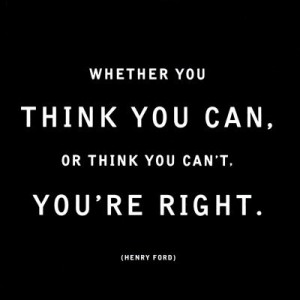 A Class Divided
A Class Divided
In 1968, Jane Elliot, a 3rd grade teacher in Iowa, conducted an experiment in her classroom to teach her students about racism. She divided the class into 2 groups- those with blue eyes and those with brown eyes. On the first day of the experiment, the blue-eyed children were told they were better than the brown-eyed children. They got special privileges such as extra time at recess and permission to use the drinking fountain. In addition, they were praised all day long and told how smart they were. The brown eyed children were told they were less intelligent than the blue eyed children and had to wear collars identifying themselves as a “brown-eyed.” Whenever the children had difficulties, it was pointed out that the cause was that they had brown eyes. The next day the roles were reversed, and the brown-eyed children were told they were superior to the blue-eyed children.
The Results
Whichever group was told that they were the “inferior group” started to believe it. They performed more slowly on timed reading tests than the other group, had difficulty interacting with their peers, and reported feeling badly about themselves, which interfered with their ability to concentrate on school work. Jane Elliot had created a self-fulfilling prophecy among her 3rd graders. Here are the videos of A Class Divided:
[youtube]http://www.youtube.com/watch?v=T8gCJ4K4tnE[/youtube] [youtube]http://www.youtube.com/watch?v=EWbxv4vlHe0&feature=related[/youtube]
What is a Self-Fulfilling Prophecy?
Wikipedia defines it as a prediction that directly or indirectly causes itself to become true, due to positive feedback between belief and behavior. Another way of saying it is that through the lens of our belief we tend to create/focus on circumstances and behaviors that in turn reinforce our beliefs about ourselves.
What is a Core Belief?
Many of our beliefs are core beliefs. A core belief is something we believe about ourselves, down to our core, to be true. Core beliefs influence the way we interact with others, communicate, feel, and make decisions. It is a filter through which we see the world. Some core beliefs are formed in childhood, and others may develop after a trauma, serious illness, birth of a child, or other life-changing event. The core beliefs that we tend to focus on in therapy are usually negative ones, however, most people have a combination of both positive and negative core beliefs.
Some examples of core beliefs are:
* The world is/is not a safe place
* I am/am not a capable person
* I am/am not lovable
* I am worthy/not worthy of respect
* I can /cannot get my needs met
* I have/don’t have value and worth
* I can/cannot take care of myself
One of my clients, who has given me permission to share her story (her name has been changed) described her persistent problem with relationships like this:
Sara’s Story:
I don’t trust myself to choose a good partner. All the men I have been with in the past have been abusive in some way or another. I keep choosing the same man! So I go through phases of giving up, and not dating or trying to meet anyone. But then I feel lonely, and find myself worrying that I’m going to grow old alone, and I don’t want that either. I don’t know how to be in a healthy relationship!
Sara had identified her core belief: I can’t trust myself. This belief was impacting her decisions in such a way that she was having the experience of self-fulfilling prophecies regularly. She would find herself saying thing like, “I knew I shouldn’t go out with him, but I did anyway, and it was a disaster!” We talked about experiences that had reinforced this belief, as well as times when she had been able to trust herself- situations when this core belief wasn’t true. Slowly, Sara started taking the risk to trust herself by allowing herself to say “no” when something didn’t feel right, by feeling and expressing her true feelings (rather than how she thought she should feel), and kindly reminding herself that her experience was valid. By taking these steps she was creating a new core belief, I can trust myself, and getting herself out of the self-fulfilling prophecy cycle.
How Can I Recognize Self-Fulfilling Prophecies?
To see how self-fulfilling prophecies might be playing out in your life, follow this 2-step process. 1) Start by identifying your beliefs about yourself. Notice what you tell yourself during times of conflict or disagreement with others. Are you kind to yourself? Do you put yourself in a “one-down” position, or a “one-up” position? Do you hear yourself saying any of the beliefs listed in the examples above? It might be helpful to write them down or journal about them. Once you have identified your beliefs about yourself, move on to the next step. 2) Piece together how those beliefs are impacting your interactions and decisions. How might you be creating a self-fulfilling prophecy? Identifying this pattern is a way to create powerful change in your life and to stop doing the same thing over and over!

